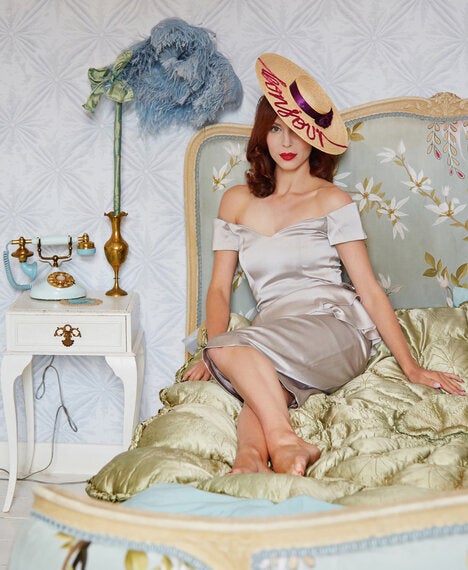
© Joanna Koralewska
The wonder of wearing a hat can transform a complete look, and portrays a unique image to the individual wearing it. Combining style, fashion satire and attitude, the hat can give any message the wearer desires.
Show-stopping headpieces have always been an integral part of British society and a stronghold at weddings and family social events but with events such as Ascot and London Fashion Week becoming more accessible; hats are taking centre stage again.
My search for the right hat often involves fun and unusual trips to six AM vintage sales and searching decadent stores such as Fortnum's and Masons. On a recent expedition I discovered the delightful millinery of Awon Golding. Winner of Hat Designer of the Year's Industry Prize, she fuses dramatic glamorous silhouettes with delicate adornments, whilst also balancing function with style.
But there is more to the milliner than meets the eye and Awons history of living in India, Hong Kong and England reflects in her multi-cultural handcrafted creations.
Looking back at the history of hats, their harmonious art have told many unique stories themselves. Here are my top ten facts...
1-
In the Victorian era, hats were seen as a status symbol and if you didn't have one, you were seen as lower class. This is because headwear was seen as a representation of a good family background.
2-
Frank Sinatra once declared that all hats should be cocked. 'Angles' he said, 'are attitudes.' And he refused to wear his hat any other way.
3-
London black taxis were originally made in their tall shape to cater for men in top hats and ladies in their bejewelled glory, a far cry from commuters stuffing their suitcases in at the eight o'clock rush hour.
4-
Hats used to poison people- literally! The term, 'Mad as a Hatter' comes from the process of using mercury, a highly toxic liquid which when exposed for prolonged periods can cause severe damage to the nervous system, with dementia type systems.
5-
Hats in the last century were mostly popular until the 1960's, when beehive hair dos would not accommodate them. However when Princess Diana started wearing them, and Philip Treacy began designing for the Royal family, they made a huge comeback.
6- The word "milliner" was first recorded in 1529, and referred to Milan, the centre source for straw hats. It refers to the term, 'one who lives in the city of Milan.'
7- Lord Beaverbrook was a huge fan of the hats and would not leave his house without one. He also declared that, 'the British electors will not vote for a man who does not wear a hat.'
And he believed that a person without one was 'without intelligence.'
I'm glad I wore a 1940's headpiece when visiting his house recently!

© C. Watts
8- It used to be unacceptable in America to wear straw hats after September 15th, as they were summer hats. Flouting the tradition could get you attacked. In 1922, it was reported in New York that they were eight days of riots. Gangs prowled the streets with large sticks beating anyone with a straw hat and even attacking shops that sold them.
9-
The traditional chef's white toque has one hundred folds around the diameter. Each one represents a hundred ways to cook an egg.
10-
The first Dunces hat was introduced by medieval theologian John Duns Scotus (1265-1308). His idea was the conical shape of it would help God transport his knowledge down the funnel to the....er, dunce.